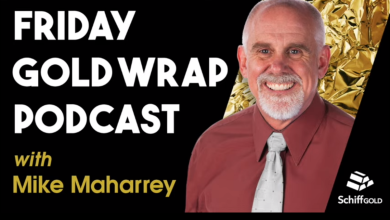Fed Keeps Its Finger on the Pause Button

Chalk one up for the status quo.
As expected, the Federal Reserve held interest rates steady in a range between 5.25 and 5.5% for the second straight month, and chairman Jerome Powell was intentionally noncommital about future Fed moves.
There was very little change in the official FOMC statement. The committee left the door open for future hikes and continued to emphasize its “data dependence.”
The Committee will continue to assess additional information and its implications for monetary policy. In determining the extent of additional policy firming that may be appropriate to return inflation to 2 percent over time, the Committee will take into account the cumulative tightening of monetary policy, the lags with which monetary policy affects economic activity and inflation, and economic and financial developments. “
The only significant addition to the statement was an acknowledgment that financial conditions have tightened along with credit conditions.
Tighter financial and credit conditions for households and businesses are likely to weigh on economic activity, hiring, and inflation.”
Federal Reserve Chairman Jerome Powell was non-committal about a December rate hike, but he did insist that just because the committee held rates steady for two straight meetings doesn’t mean it can’t hike again in the future.
The idea that it would be difficult to raise again after stopping for a meeting or two is just not right. The Committee will always do what it thinks is appropriate at the time.”
Powell emphasized that “the process of getting inflation sustainably down to 2% has a long way to go,” and said rate cuts aren’t on the table.
The fact is the committee is not thinking about rate cuts right now at all. We’re not talking about rate cuts. We’re still very focused on the first question, which is ‘have we achieved a stance of monetary policy that’s sufficiently restrictive to bring inflation down to 2% over time, sustainably?’ That is the question we’re focusing on.”
The FOMC continued to play up the strength of the economy. The FOMC statement noted that economic activity expanded at a “strong pace” in the third quarter and “job gains have moderated since earlier in the year but remain strong.”
During his press conference, Powell said the committee may have “underestimated the balance sheet strength of households and small businesses” because spending remains strong. Powell did not mention that Americans were maintaining their spending spree using credit cards.
Powell continued to insist that we need to see a slowdown in economic growth and some “dampening” in the labor market in order to “fully restore price stability.” In other words, he wants to see more people lose their jobs.
Peter Schiff recently explained that this is not a pathway to lower price inflation. Powell and other Keynesian economists misdefine economic growth as consumer spending. They’re looking at metrics such as retail sales and GDP growth. “That’s not economic growth,” Schiff said. “That’s just spending. That’s not growing the economy. That’s spending what a growing economy produces.”
He went on to say that you don’t need to “weaken” the economy. You don’t want people to stop working. If they aren’t working, they aren’t producing.
That means there’s less stuff. That puts upward pressure on prices. We want everybody to keep working. We just want them to stop spending everything they earn. They need to take some of their paychecks and save it — put it in the bank.”
The markets seemed to read Powell’s noncommital stance as doveish. One analyst told CNBC that ‘the statement’s emphasis on financial conditions weighing on the economy is potentially a signal that the Fed has minimal appetite to raise rates further.”
Stocks rallied after the meeting. The Dow was up 221 points and the NASDAQ gained 1.6%. Meanwhile, the dollar fell against most currencies.
In a tweet, Schiff said price inflation is alive and well and isn’t going anywhere despite what Powell and his central banking buddies say.
Powell still claims that inflation is a function of consumer expectations. Regardless of what consumers expect, as long as excess government spending and deficits continue, inflation will stay well above the Fed’s 2% target. Once the Fed returns to QE, it will rise much higher.”
SLOWLY AND THEN ALL AT ONCE
Most mainstream analysts and pundits believe everything is fine. The big 4.9% GDP print for the third quarter has everybody convinced that higher interest rates won’t significantly squeeze the economy. They remain oblivious to the fact that a financial crisis is already bubbling under the surface.
As the saying goes, things happen slowly and then all at once.
The economy isn’t a microwave. You don’t shove in a policy, hit 30 seconds, and then poof, you’re done. The economy grinds along slowly.
This was exactly how the 2008 financial crisis unfolded.
Interest rates peaked in June of 2006, and the Fed held them steady a 5.25% for more than a year.
And in 2007, nothing bad happened. In fact, annual GDP growth that year was 4.9%. Everybody in the mainstream insisted everything was fine.
The first interest rate cut wasn’t until September 2007 when the implosion of the subprime mortgage market became too big to ignore. In other words, while rates were at their peak, GDP growth was strong. Now, I’m not saying things are going to unfold just like they did in 2008. But shouldn’t we at least reference history?
The situation in 2007 was very similar to what’s going on today. We came out of a long period of artificially low interest rates that blew up a massive bubble that started to leak air when the Fed tried to normalize rates. Eventually, the bubble popped and everything went to crap.
Now, I’ll admit, the situation isn’t exactly like 2007.
It’s worse.
Interest rates were lower for longer. Then we had the insane quantitative easing during COVID. As a result, we have more debt, more bubbles that are much bigger and rates are even higher than the peak in 2006.
But nobody remembers history, much less learns from it.
Call 1-888-GOLD-160 and speak with a Precious Metals Specialist today!
Buka akaun dagangan patuh syariah anda di Weltrade.
Source link






